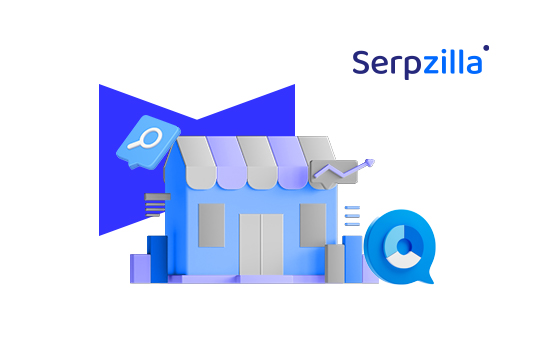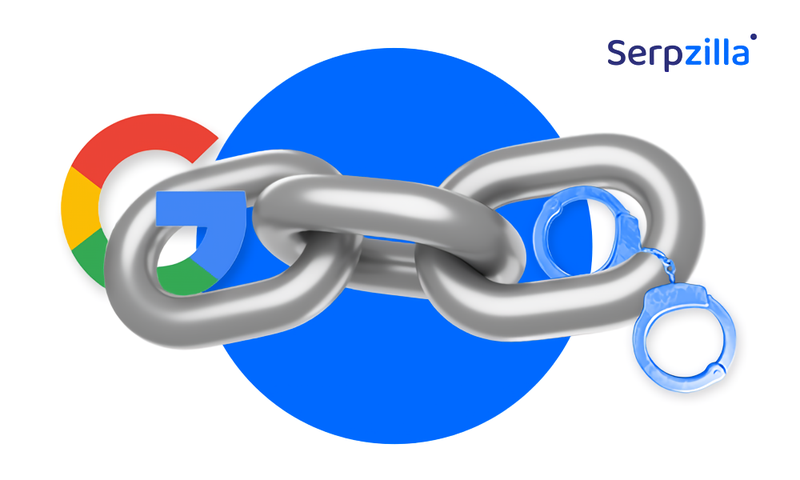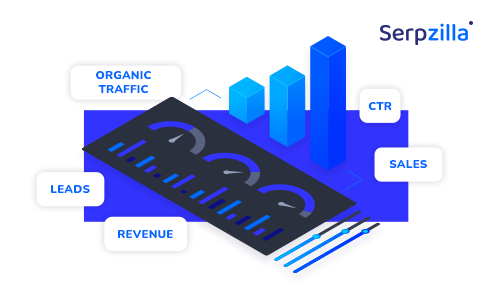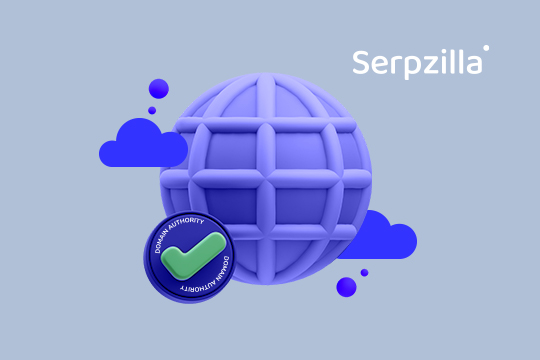Most SEOs obsess over keywords (can you blame them?). Fewer pay the same attention to backlinks, yet they’re just as critical for ranking power. One of the most overlooked ways to win links is backlink gap analysis: comparing your link profile with competitors to spot where they’re ahead of you. Done right, it reveals a ready-made list of authoritative sites that trust your competitors but not you.
This guide breaks down what a backlink gap is, why it matters in 2025, and how to use tools like Serpzilla to turn competitor advantage into your own SEO growth.
What Is Backlink Gap in SEO?
A backlink gap is the set of websites that are linking to your competitors but not to you.
Example: imagine three top blogs in your niche publish “Best Tools for X.” Your competitors all appear in those lists, but your brand isn’t mentioned. That absence is your backlink gap: the site clearly endorses solutions like yours, they just haven’t discovered (or linked to) you yet. That’s the opportunity to seize right there.
Link gap vs link velocity: What’s the difference?
Both backlink gap and link velocity help you understand where you stand with links, but they look at it from different angles. A backlink gap shows you which domains are linking to your competitors but not you. Link velocity, on the other hand, tracks how quickly those links are being built or lost.
Here’s a concise comparison table to help you out:
| Criteria | Link gap | Link velocity |
| Focus | Which domains competitors have that you don’t | How fast links are being gained or lost over time |
| View | Static snapshot of missed opportunities | Dynamic trend unfolding weekly/monthly |
| Key metric | Overlapping referring domains | Number of links added or lost per time period |
| Best use case | Building a target list of domains for outreach or placement | Ensuring your backlink growth looks natural and penalty-free |
Why backlink gaps exist (and how they form)
Backlink gaps happen for a number of simple reasons:
- Competitors invest in outreach or PR where you haven’t
- Industry sites naturally reference the “bigger” brand first, and yours is less well-known
- Some content formats (data studies, tools, and calculators, for example) attract links you haven’t created
- You’ve earned links but lost them through site changes, redirects, or expired placements
Understanding why a gap exists is as important (if not more so) as finding it. If it’s content-driven, you may need to create assets before caring about links.
Why Backlink Gap Analysis Matters for SEO
Every missing link represents both a lost authority signal and a missed chance to appear in places your audience already trusts. Closing backlink gaps goes a long way for your big-picture SEO efforts:
Spot missed opportunities before your competition does
Every month, competitors are securing links that improve their authority. If you’re not running regular gap checks, you’re basically leaving leads on the table. By spotting domains with multi-competitor overlap, you can jump in before they become unreachable or saturated.
Improve EEAT signals with link equity matching
Google and AI systems lean heavily on off-page signals when judging Expertise, Experience, Authority, and Trust (EEAT). If trusted domains link to your competitors but not you, your credibility lags behind. Matching those placements shows that you belong in the same expert category.
Increase authority and catch up in SERPs
Backlink gaps are often the hidden reason competitors sit a few spots higher than you in search results. When they have links from trusted industry sites and you don’t, Google sees them as the more credible option. Closing even part of that gap can go a long way: suddenly, you’re no longer the only player in your niche without those authority signals.
Stay visible in AI-powered search
AI tools like ChatGPT, Perplexity, and Google’s SGE now highlight sources instead of simply listing websites. The domains they cite most often are the ones with strong backlink authority. When you work with backlink gaps, you can more easily secure your place in these AI summaries and keep your brand visible wherever users search for answers.
How to Perform a Backlink Gap Analysis: A Step-by-Step Plan
So, what is backlink gap analysis? It’s the process of identifying websites that link to your competitors but not to you, and then using that information to close the authority gap.
Here’s how you can approach competitor backlink gap analysis in 6 simple steps:
Step 1. Identify true SEO competitors by URL
Don’t assume your offline competitors are the same online. That’s a mistake many brands make. In SERPs, your main rivals are the sites outranking you for your target keywords, whether they’re global brands, niche blogs, or even affiliates.
Start with keyword-based competitor analysis and discovery instead of relying on your mental list.
Pro tip: Use the Backlink Competitors feature in Semrush or a similar capability in other tools to discover the URLs that outperform yours. It generates a report with the domains you share the most common backlinks with.
A backlink competitor report in Semrush. Source: Semrush.
Step 2. Use a backlink gap tool
Once again, no need to turn to manual research. Compare multiple domains at once with available backlink gap tools. They show you which sites are linking to your competitors but skipping you.
💡 Jump to the next section of this article to discover the best platforms for backlink gap analysis.
Pro tip: Use the Favourites tool in Serpzilla to upload your competitors’ referring domains and place your backlinks on the same websites. This way, you’ll close the gaps between your site and your competitors’ backlink profiles.
Step 3. Filter out low-quality or irrelevant links
Not every competitor link is worth chasing. To make your efforts more focused and rewarding, make sure to discard:
- Spammy directories
- PBNs and auto-generated blogs
- Non-indexed or deindexed domains
- Irrelevant industries with no topical connection
Step 4. Segment results by content type or page intent
A mention on a news site carries different weight than a spot on a “Top 10 Tools” list, and both are different from a niche blog post. If you stack all the links together, you’ll miss the chance to match your outreach or acquisition strategy to the context.
After segmenting results into buckets, you can decide the best way to approach each.
Break them down by categories:
- Blogs & editorial mentions
- Resource pages/lists
- Review sites
- Aggregators
- News outlets
- Other categories uniquely relevant to you
Step 5. Prioritize domains for outreach or scalable acquisition
The real goldmine is sites that link to multiple competitors. If three or four of your rivals have already earned backlinks from the same blog or resource page, that’s a clear sign the site is open to linking within your niche. These domains give you the highest chance of success.
Pro tip: Instead of cold emailing as your outreach strategy, use Serpzilla to find scalable placement options on these same domains. It’s faster, cheaper, and has far lower rejection rates.
Step 6: Track and iterate monthly
Nothing stands still in SEO. Competitor link profiles change and evolve pretty quickly. Schedule monthly or quarterly reviews to refresh your gap list and avoid slipping behind again.
That’s it! Now you know how to do backlink gap analysis online.
Backlink Gap Tools and Platforms Worth Using
We’ve already mentioned a couple of great platforms for building your backlink gap strategy. Let’s take a closer look at them and other tools that will make your life easier:
Semrush Backlink Gap tool
Source: Semrush.
- Features: Comparison of up to 5 domains, interactive Venn diagram, filters by link type.
- Best for: Agencies running multi-client audits.
- Cons: Can be noisy with irrelevant domains.
Ahrefs Link Intersect
Source: Ahrefs.
- Features: Comparison of up to 10 competitor domains, filters by link type (dofollow/nofollow) and authority (DR/UR), quick export.
- Best for: Solo SEOs and smaller teams.
- Cons: Fewer filtering options compared to Semrush.
Moz Link Explorer
Source: Moz.
- Features: Domain Authority scoring, competitor overlap, finding anchor text distribution, spam scoring to flag risky links.
- Best for: Beginners or budget-conscious marketers.
- Cons: Smaller link index.
Serpzilla for scalable backlink acquisition
- Features: Backlink gap comparison, link purchasing marketplace, filters for relevance and DR.
- Best for: Marketers who want to act immediately on gap insights.
- Unique value: Makes skipping outreach possible by placing contextual links directly on domains where competitors already appear.
Top 4 Backlink Gap Strategies in 2025
Below are some of the most effective strategies in 2025, with notes on when to use them, how they work, and the effort involved.
1. Guest posting on domains linking to multiple competitors
- Use case: If three of your competitors already have guest posts on a blog in your niche, chances are the editor will welcome your contribution too.
- How to do it: Offer a fresh angle or data-backed article that adds value to their audience. A single contextual link here does more for authority than ten low-quality placements.
- Tools: Serpzilla
- Difficulty: Medium
2. Converting brand mentions into contextual backlinks
- Use case: Sometimes, the hard work is already done, and your brand gets mentioned. However, it’s not being linked. The good news is, those are the easiest backlinks to secure.
- How to do it: Reach out politely and ask for the mention to be linked. Editors often say yes because it improves user experience.
- Tools: Ahrefs Alerts, Google Alerts
- Difficulty: Easy
3. Running broken link replacement campaigns
- Use case: Competitor links don’t last forever. Pages get deleted, resources expire, and 404s pile up. That’s another chance for you to catch up.
- How to do it: When you find a broken link pointing to a rival, contact the site owner and suggest your resource as the fix. You’ll help them clean up dead links and gain an authority backlink in the process.
- Tools: Ahrefs Broken Links, Serpzilla monitoring
- Difficulty: Medium
4. Partnering with aggregators and review sites
- Use case: Aggregators are great sources of trusted links.
- How to do it: Most sites, including SaaS directories and eCommerce comparison platforms, have submission or contact forms, so it’s easy to reach out. Some placements can even be automated through platforms like Serpzilla.
- Tools: Manual research, Serpzilla placement
- Difficulty: Easy, but competitive
Common Mistakes to Avoid in Backlink Gap Analysis
Steer clear of these pitfalls and get tips on effective fixes if you’re already experiencing a problem with your backlink gap strategy.
Mistake 1: Focusing only on DR without contextual fit
A high Domain Rating looks tempting, but it’s not the only recipe for success. If the site isn’t topically relevant, that backlink won’t help much and could even look suspicious.
| Mistake | Fix |
| Chasing only high-DR sites regardless of topic. | Prioritize domains with both authority and topical relevance. |
| Treating DR as the single measure of quality. | Look at traffic, indexing status, and page context too. |
Mistake 2: Ignoring page-level relevance and link placement
Where on the page your link lives matters as much as where it comes from. Sidebar and footer links don’t provide the same value as in-content mentions.
| Mistake | Fix |
| Accepting links from irrelevant subpages. | Ensure the backlink is on a page relevant to your niche. |
| Settling for footer/sidebar placement. | Push for contextual, in-body placement if possible. |
Mistake 3: Overlooking internal linking gaps
Even great backlinks won’t perform if the page they point to is a dead end within your site. Internal links always add value, so take advantage of that.
| Mistake | Fix |
| Sending all backlinks to the homepage. | Diversify targets: product pages, resources, blogs. |
| Ignoring internal linking around the backlink target. | Build supporting internal links to distribute link equity. |
Mistake 4: Failing to refresh competitor data monthly
This can’t be stated enough: Make your link gap analysis a solid SEO routine. A gap you closed last month might have reopened: competitors don’t stand still and are working on their visibility as well.
| Mistake | Fix |
| Running backlink gap analysis only once. | Re-run checks monthly or quarterly, depending on niche speed. |
| Relying on outdated exports. | Use live data from reliable SEO tools. |
FAQ: Everything You Need to Know About Backlink Gaps
What is a backlink gap in SEO?
It’s the set of websites linking to your competitors but not you. Closing this gap improves your authority and rankings.
How is backlink gap analysis different from a backlink audit?
An audit looks inward and reviews your own links. A gap analysis is outward-facing: It compares your profile with competitors to uncover specific domains that trust them but not you. It helps you find opportunities to grow and catch up.
What tools are best for backlink gap analysis?
Several SEO platforms offer backlink gap features, but each serves a slightly different role. SEMrush and Ahrefs are strong for data depth and competitor comparisons, while Moz offers simpler authority metrics for beginners.
Serpzilla stands out because it goes beyond analysis: you can immediately act on the gaps you found by placing links, which makes it a practical option for fast execution.
How often should you perform backlink gap checks?
Frequency depends on your industry’s pace. In competitive niches like SaaS, eCommerce, or finance, new links are built daily, so running gap analysis monthly helps you stay on top. For slower-moving industries, quarterly checks are usually enough.
The key is consistency: regular updates ensure you don’t let competitors pull too far ahead while you rely on outdated data.
Can Serpzilla help close backlink gaps?
Yes. While most tools only point out the domains you’re missing, Serpzilla lets you act immediately by finding placement opportunities on those sites. You’ll spend less time on cold outreach and more time securing links that shrink your competitor gap.
Final Thoughts: Go from Gaps to Growth
Backlink gap analysis eliminates guesswork and gives you precise SEO directions: you see which doors are open, and which ones you still need to knock on. Don’t chase every possible backlink, but instead focus on the domains your competitors already earned. That’s the fastest way to level the playing field.
Our advice? Start small: pick one keyword, two competitors, and one tool. Within weeks, you’ll see where you stand and where you can overtake them.









